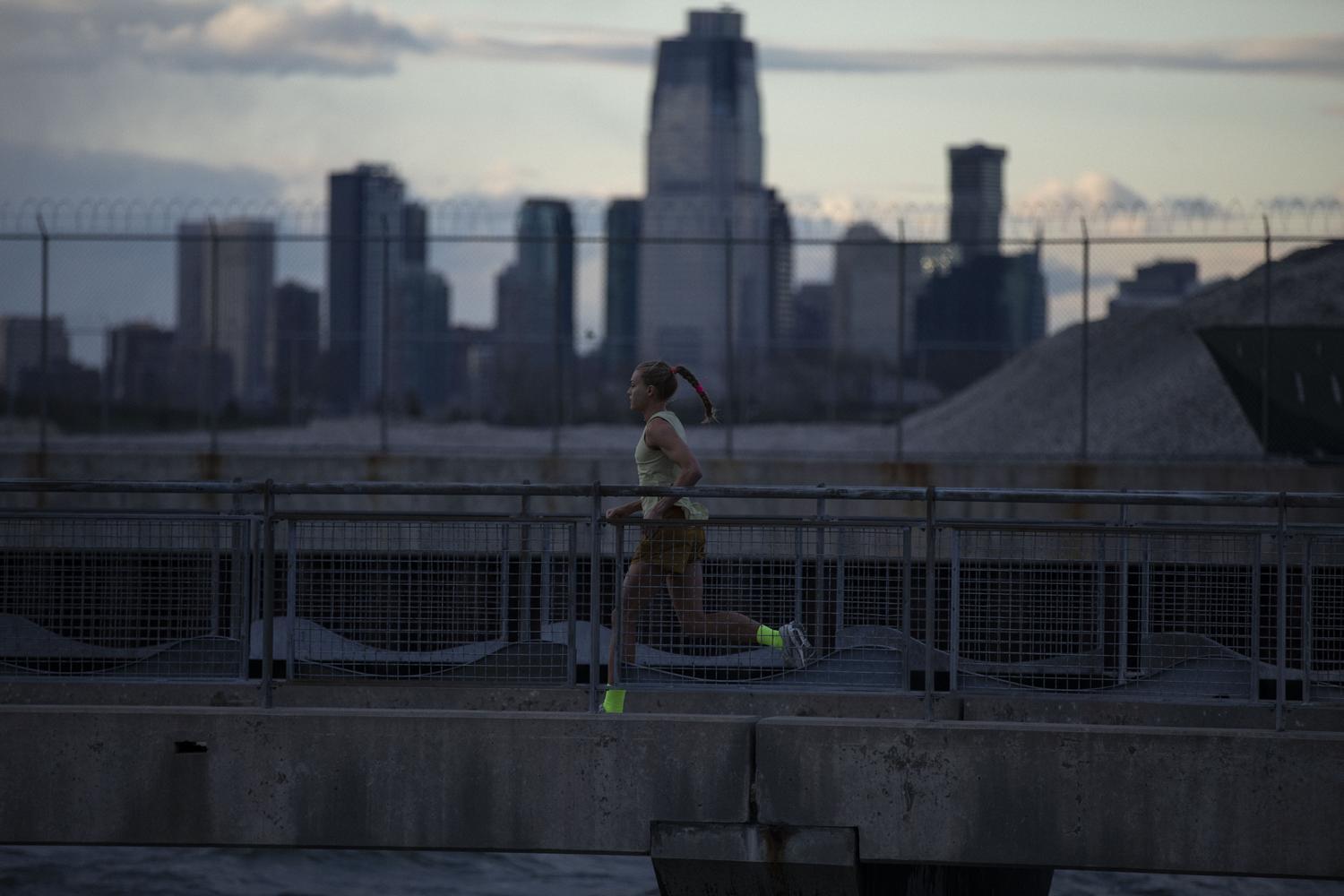Heat Waves 101: Why Summer Feels Like a Sufferfest
Photo by Eszter Horanyi
Feeling like every outdoor adventure this summer turns into a sufferfest? You’re not imagining it. Heat waves are hitting harder, lasting longer, and reaching places that have never seen this kind of extreme.
To understand what’s driving these hot summers, we caught up with Boston-based meteorologist and atmospheric scientist, Will Stikeleather, a friend of the POW Science Alliance, who’s just as likely to be analyzing jet stream patterns as he is chasing powder, to break down the science behind heat waves, the trends, and what we can do to turn down the heat.
What Is a Heat Wave?
The technical definition of a heat wave can vary by region, but the National Oceanic and Atmospheric Administration (NOAA) defines it as two or more days of abnormally high temperatures.
“This definition is pretty ambiguous, and that vagueness is likely due to the variety of ways a heat wave can manifest,” says meteorologist Will Stikeleather. “Some may be characterized solely by extremely hot temperatures, but that fails to capture the full scope of the hazard. Humidity is equally important because it dramatically increases heat stress impacts on humans.”
Most heat waves are driven by large high-pressure systems in the upper atmosphere that trap heat over a broad region—a phenomenon sometimes referred to as a “heat dome.” “These warm high pressures cause air to sink and warm, increasing temperatures at the surface,” Will explains. “A heat dome will rotate air counterclockwise around its center of high pressure, so if warm or humid air is located south of the system, southwesterly winds will transport additional warmth and humidity into the affected zone. These conditions only dissipate once the high pressure moves away.”
In extreme cases, heat domes can stall for days or even weeks due to jet stream patterns that block their movement. “These atmospheric ‘traffic jams’ or blocking patterns are responsible for some of the most extreme heat waves observed in recent years, such as the prolific heat wave that baked the Pacific Northwest and British Columbia in June and July of 2021 that drove temperatures above 115°F in some regions,” Will says.
Is Climate Change making Heat Waves Worse?
(Spoiler: Yes)
Heat waves are becoming more frequent, more intense, and more widespread. From 1895 to 2023, the contiguous United States (CONUS) has warmed by about 2°F. While that may not sound dramatic, it’s enough to shift the baseline, making extreme heat events more likely and longer-lasting.
“Heat wave frequency has nearly tripled since the 1960s, according to research by NOAA ,” says Will, “And the heat wave season—the number of days between the first and last heat wave of the year—has more than doubled from ~25 days to ~70 days. This allows the opportunity for heat waves to occur beyond the peak of summer.”
In addition to that, expanding windows, increasing frequency, and higher baseline temperatures mean that heat waves are also more severe.
“The June 2021 Western Canada heat wave, which had been estimated to be a once-in-1,000-year event (0.1% chance of occurring in a year), was made 2°C hotter than a once-in-1,000-year event that would have occurred during 1850–1900,” Will says, citing data from the 6th Intergovernmental Panel on Climate Change (IPCC6). “IPCC6 stated that it is ‘virtually certain’ that climate change has increased warm temperature extremes across the globe, both for frequency and severity.”
One reason for this is that rising global temperatures make it easier for heat waves to form in the first place. “Elevating baseline global temperatures means that less anomalous atmospheric conditions are needed to generate frequent and severe heat waves,” says Will.
Geographical Factors
Not all heat waves look the same, and their impacts can vary widely depending on where you are.
Humidity is a huge factor. Warmer air holds more moisture, so heat waves are increasingly paired with high humidity levels. The East Coast is particularly vulnerable, where rising sea surface temperatures fuel evaporation and amplify humidity inland.
There are also changes higher up in the atmosphere that are making heat waves more stubborn, allowing for prolonged heat to settle over entire regions for days or even weeks. “Observed warming temperatures are most pronounced in polar regions, a process called Arctic Amplification,” says Will. “Researchers have linked this phenomenon to an increase in ‘wavier’ jet stream patterns across the mid-latitudes (Francis and Vavrus, 2012, White et al. 2023). Wavier jet stream patterns can generate strong, warm high pressures in the summer. Not only are these extreme patterns increasing the opportunities for heat domes, but they tend to be more persistent and stubborn to move, a scenario we saw during the 2021 Western North America heatwave. It is important to note that research is still ongoing to better understand this complex interaction.”
While heat waves are increasing across the U.S., some regions are heating up faster than others. “Studies by Climate Central reveal that the most pronounced warming in the U.S. since 1970 has occurred across the Northeast, which accounts for three out of the top five fastest warming states,” notes Will. “The Desert Southwest is another notable region of warming in the U.S. Polar regions across the world are warming the fastest due to Arctic Amplification, so it is no surprise that the fastest-warming state is Alaska,” he adds.
Cities are uniquely vulnerable to heat waves due to what’s called the urban heat island effect. Concrete, asphalt, and buildings trap heat far more than forests or fields, making urban areas significantly hotter than nearby rural ones.

“The urban built environment traps a ton of heat. The low albedo of urban infrastructure absorbs heat and locally increases temperatures, unlike in rural areas with vegetation, which can cool the environment through the biological process of evapotranspiration,” Will explains. “Heat doesn’t dissipate as efficiently overnight in cities; that’s when we see some of the highest risks to vulnerable populations.”
Lack of nighttime cooling is especially dangerous, as the body needs those cooler hours to recover from daytime heat stress. Without that recovery window, the health risks multiply.
What It Means for the Outdoor State
If you find joy, peace, or purpose outside, this matters. Heat waves aren’t just about discomfort. They’re disrupting ecosystems, threatening our health, and reshaping how, when, and where we get outside.
Understanding the science is the first step, but it’s what we do with that knowledge that counts. Extreme heat is testing our infrastructure, our communities, and our limits. While air conditioning might be a temporary fix, it’s not a long-term solution. Our increased reliance on it strains our grid, pumping more greenhouse gases into the atmosphere, fueling the cycle further. If we want cleaner air, safer summers, and a future where we can get outside without the risk of heat stroke, we need to tackle this at the source.

Solutions already exist, and they’re local. From rooftop solar projects to rural electric co-ops and community-led grid upgrades, people across the country are organizing to power their neighborhoods with clean, reliable energy. This isn’t just about policy; it’s about people stepping up in their towns to make their communities more resilient to the impacts of climate change. You can be a part of this climate solution. Sign up for our Clean Energy Toolkit to learn how to speed up the transition to renewables, reduce emissions, and build a more resilient grid.
In the meantime, when the temperatures spike, stay hydrated, check the forecast, seek shade, and when it’s sweltering out, hit the trail early or cool off at your favorite swimming hole. We’ll see you out there!

Author: Stacie Sullivan
Stacie always knew she wanted to pursue a career in the ski industry from a young age, having first clicked into skis at the age of 4 and writing her 8th grade career project on being a professional skier. While her dreams of becoming a professional athlete didn’t quite pan out the way she planned at […]
